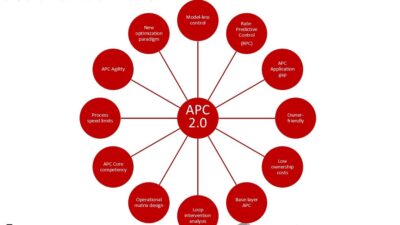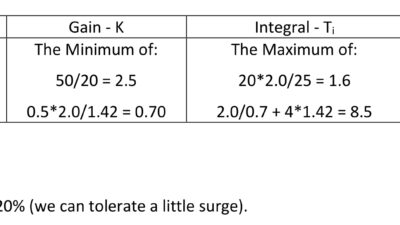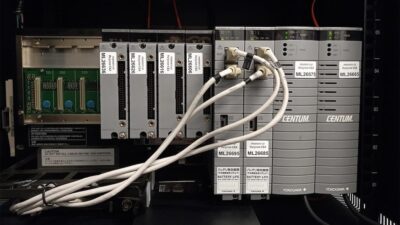Colin Rickard, a managing director with data-management specialist DataFlux, says work with chemicals giant DSM prompted development of an off-the-shelf commodity coding solution for the purchasing and spend-analysis process that saves users time when managing data quality with international coding standards such as UNSPSC and e Cl@ss.
When Heerlen, The Netherlands-headquartered DSM decided it needed greater visibility into its spend, it discovered that specialist strategic sourcing applications weren’t fully equal to the task of matching and classifying the products and services it was buying.Instead, relates DSM’s global data manager Joachim Beurskens, the [euros] 9 billion multinational chemical company went with a custom-developed solution from data management vendor DataFlux , a subsidiary of business intelligence specialist SAS Institute.The logic was simple: Rather than invest effort in a complicated “after the event” spend analysis that looked problematic at best, do the classification at the point of raising the purchase order—that way, a body of data would build up that was known to be not only accurate, but up-to-date.But things weren’t quite that straightforward. Direct spend, totaling some [euros] 4 billion each year, wasn’t a major headache, explains Beurskens. The requisite coding information could be applied to each raw materials item master record within the company’s SAP enterprise suite, enabling future purchases to be logged. “But indirect spend, equating to [euros] 2 billion each year, was a much bigger problem,” he says. “It wasn’t covered by SAP-derived purchase orders, but free-format text orders raised by end users and buyers.”In theory, Europe’s e Cl@ss global classification system was the ideal means for classifying every purchase: Simply require the person filling-in each purchase order to insert the correct e-Cl@ss code. But with some 27,500 codes to choose from, and a lot of maverick buying, data accuracy was low.“Worldwide, there were a thousand people raising purchase orders, and we were asking them to make consistent judgments about which of the 27,500 codes was applicable to every order,” recalls Beurskens. “What was worse, they themselves didn’t have a vested interest in generating the right code. They just needed a code to put on the order, and would often put on the highest-level code that looked right.”Enter, in March 2007, DataFlux, which already had a relationship with another part of the DSM group— DSM Nutrition .A plan soon emerged, says Colin Rickard, DataFlux managing director for Northern and Western Europe. For a start, classification at the very detailed 27,0000-code level was probably a step too far. In practice, classification at a higher level, containing just 1,000 codes, would still generate meaningful insight to purchase spend.“What this meant was that if we could retrospectively analyze past purchases and assign them to the correct code at the 1,000-code level, we could develop an intelligent‘prompt’ to add to the purchase ordering system,” says Rickard. Better still, by harnessing service-oriented architecture, the prompt could be fully integrated with the normal order-raising process, whether that was SAP-based, or one of the more rudimentary systems in use throughoutthe group—or even little more than a spreadsheet-based system.With a plan in place, progress was rapid. It took just 25 days, for example, to build the reference database, created by analyzing and classifying some five years of purchase data. Coding, too, was quick.“What did take time was testing,” recalls Rickard. “The data had to be correct, otherwise the exercise was pointless.” A further barrier to progress was the fact that internal DSM rules meant that new software could only be released into the corporate IT environment at two points in the year—meaning that the next available go-live date was November 2007.Today, says Beurskens, the DataFlux-built application is working as intended, with every purchase order being matched to the appropriate e-Cl@ss code.“Users enter the text for the item they want to buy, along with any items codes that they have, and a screen pops up saying:‘Here are the top five recommended e-Cl@ss codes based on what you’ve typed’,” he explains. “It looks exactly like the normal SAP purchase order process, but behind the scenes it is matching the text against hundreds of thousands of keywords in several languages, and generating e-Cl@ss codes.”All the user has to do, adds Rickard, is scroll down the proffered list to select the right item, or click on the screen’s radio button to accept the top suggestion. “Compared to the levels of classification accuracy that DSM obtained, it’s a significant improvement,” he says. “Granted, the [euros] 2 billion indirect spend is only a third of the overall annual spend, but even a small percentage improvement in purchase cost on [euros] 2 billion is still a significant amount.”Beurskens concurs, pointing to future projects already in the pipeline. A planned extension of the sourcing work, he explains, will be to intercede in the “create new vendor: process, intelligently matching proposed new vendors typed in at the input screen to vendors already on file in the system. “The idea is to make sure we aren’t entering a vendor that is already set up, but with a different spelling or format,” says Beurskens.DataFlux, too, has plans, says Rickard. The work with DSM has prompted the company to develop an off-the-shelf commodity coding solution called DataFlux Commodity Coding Accelerator, enabling users to save time when managing data quality with international coding standards such as UNSPSC and e [email protected] press time, pricing information is unclear, but, concludes Rickard, the new product is due to be formally announced at the end of April.



